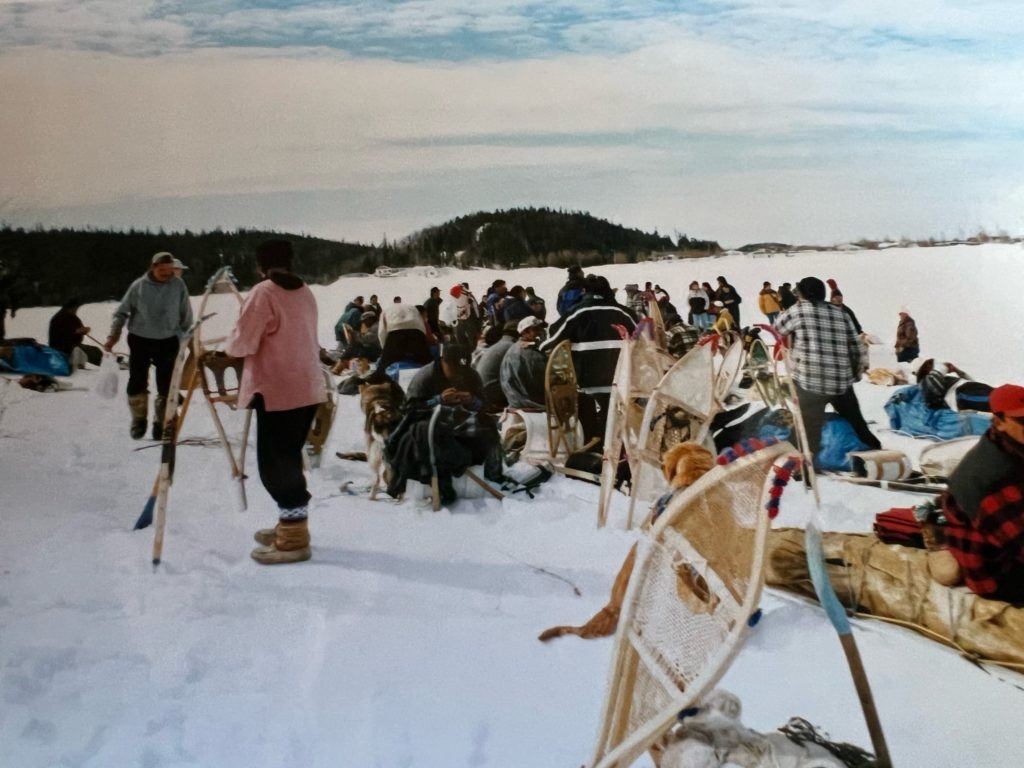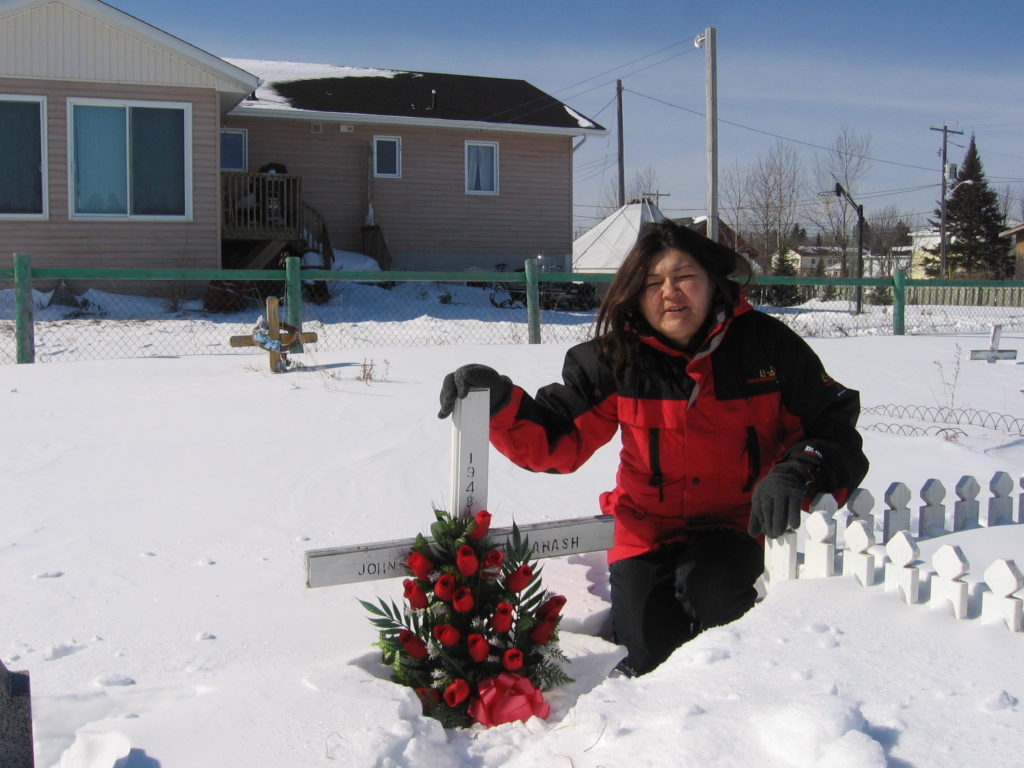Dianne Ottereyes Reid had a powerful reason to join a fledgling CBC unit created to broadcast in Indigenous languages across Quebec a half century ago.
“For me, the foremost reason why I jumped on the bandwagon was the fact that I went to residential school,” Reid said. “Having experienced being suppressed for speaking my language, when I left, I swore I wouldn’t let anyone stop me from speaking my language again.”
The CBC Cree radio and television branches celebrated their 50th and 40th anniversaries this November, with the CBC North Cree unit beginning radio broadcasting in 1972 and the first Cree television show, Maamuitaau, being launched in 1982.
CBC held an event at their new Maison de Radio-Canada in Montreal to mark the milestones November 24, when they recorded a special radio broadcast featuring some of the first members of the Cree unit.
The Cree-language programming was introduced with short segments aired during Inuktitut programming. Inuk broadcaster Elijah Menarik was the first to speak Cree as part of the radio programming. Menarik had learned Cree after running away from residential school and living with a Cree family for two years.
In 1975, the hour-long show Najawew Dipajimoon began (later renamed Eyou Dipajimoon). In 1980, a Cree morning show was added, called Winschgaoug. The Cree programming came at a crucial time for the Cree nation, as the James Bay and Northern Quebec Agreement was just signed in 1975.
Emma Saganash and Reid were two of the earliest employees, joining in 1977 and 1975 respectively. Reid told the Nation that she originally was studying linguistics in the mid-1970s when a friend who was a journalist at Radio-Canada approached her about a new opportunity.
“She said there’s something exciting coming up; the federal government has announced a national program for Indigenous broadcasting. It’s going to be a whole new field,” Reid recalled.

Reid ending up going to Radio-Canada and joined a committee to help set up community radio in Quebec for First Nations communities, doing community radio training with First Nations from all different nations across the province. Reid stayed at CBC until 1986.
Her passion to keep the language alive was what initially drew her to linguistics and kept her working in radio and television.
“I understood that mass media is a powerful medium of influence, to communicate with one another,” Reid explained. “If we have regional radio stations, we can bring news in the Cree language to the Cree people so they can know what’s going on in the world. And bush people can hear it on short wave.”
She credits the introduction of Cree radio and television with strengthening the sense of nationhood and self-determination as Crees everywhere could learn about what their leaders were doing to advocate for their rights.
Some of her best memories of that era come from visiting Elders in the bush who had heard her programming. “They’d say, ‘Oh, I always listen to you every day! I finally get to meet Dianne Reid!’” she added with a laugh.

Now, she’s happy to see how far the Cree unit has come. Once relegated to what she called a basement storage unit, she was overjoyed to see that the unit is prominently featured at the entrance of the new Radio-Canada building.
“I said, my goodness, after 50 years we’ve come a long way, we’re in the lobby at the front door!” she shared with a smile. “We’re not in the dungeon anymore!”
Saganash recalled that CBC Radio began hiring Cree students studying in Montreal in the 1970s to do five-minute newscasts during the week. One day she got a phone call asking if she wanted to try radio.
“I thought that was very interesting. The person said, ‘Why don’t you come out and try it? We’re going to do some training.’ I tried it out, and loved the idea of radio,” she said.
After going on maternity leave in 1981, Saganash worked at the local Friendship Centre for a few years before returning to CBC in 1985 and staying another three years. She returned in 1998, going on to host Maamuitaau for 10 years, retiring in 2018 after having moved into management.
“I believe that our programs meant a lot to the Cree people up North,” she shared. People were amazed when they first heard Menarik speak Cree, which helped to spur the development of Cree programming.
The programming back then focused not just on news and weather, but also the status of patients who had gone south for treatment, as well as covering Cree legends, myths and stories. Saganash heard that people would record them and listen to them before bed.
Stories that stood out for her included covering a 1,300 kilometre walk across the Cree nation to raise money for dialysis machines for patients in the North, because of how many people were involved. Another trip took her to Moose Factory, where her siblings were sent for residential school, including a brother who never returned home.
“I finally found where he was laid to rest, in an unmarked grave. I taped the finding, and I showed it to my mom. For her it was closure. She cried so much that day,” Saganash shared. She found the grave on December 6, 1994, 40 years to the day after he passed away in 1954.





